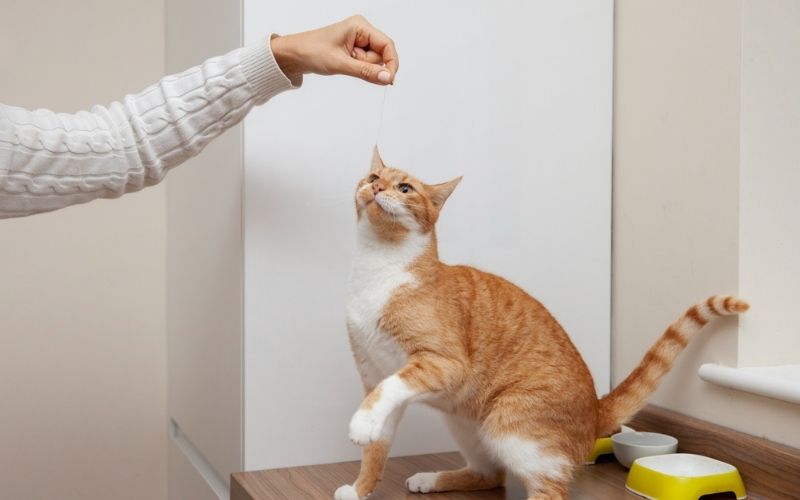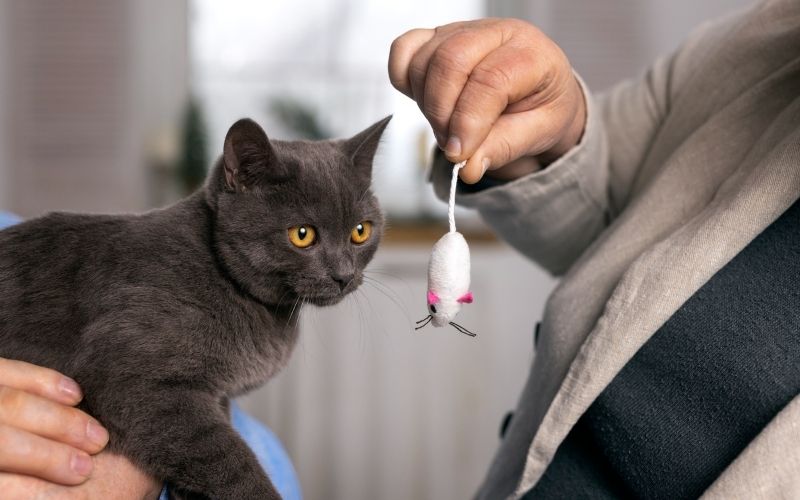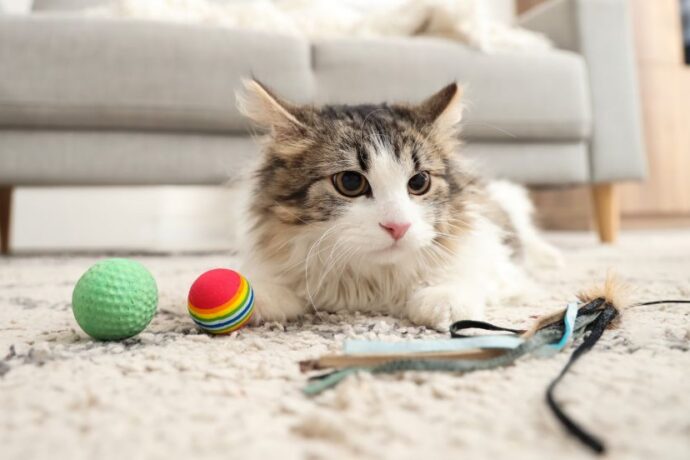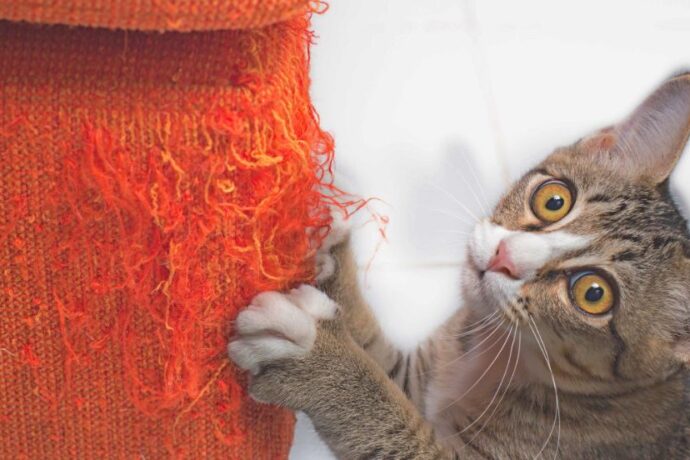Cats are often seen as independent and stubborn, but with the right techniques, they can be trained just as effectively as dogs. While cats have a reputation for doing things on their own terms, studies show they are highly intelligent and capable of learning commands when training involves positive reinforcement. A 2019 study published in Applied Animal Behaviour Science found that cats respond well to clicker training and reward-based techniques, making it possible to teach them fun and practical tricks at home (1).
In this blog, we will explore 10 easy tricks your cat can learn, backed by expert insights and simple step-by-step methods.
1. Sit – The Foundation Trick
Teaching your cat to sit is one of the simplest tricks and lays the groundwork for more advanced training.
How to do it: Hold a small treat slightly above your cat’s head. As they look up, they will naturally lower their back and sit. Say “Sit” and reward immediately.
Why it works: Cats instinctively sit when following an object with their eyes, making this trick easy to master in a few short sessions.
2. High-Five – The Showstopper

Freepik
This adorable trick is sure to impress your friends and make for great social media moments.
How to do it: Hold a treat in your hand and wait for your cat to reach out. When their paw touches your hand, say “High-five” and reward them.
Expert insight: According to feline behaviourists, tricks like high-fives stimulate your cat’s mind and improve paw-eye coordination.
3. Come When Called – Building Responsiveness
Cats are independent, but they can be trained to respond to their name or a specific cue.
How to do it: Call your cat using their name or a unique sound. Offer a treat when they approach you. Repeat consistently to reinforce the association.
Science-backed: Research published in Scientific Reports shows that cats can distinguish their names and respond when consistently rewarded (2)(3).
4. Spin – A Fun and Easy Trick

Freepik
Teaching your cat to spin is simple and entertaining.
How to do it: Hold a treat near your cat’s nose and move it in a circular motion. As your cat follows, say “Spin” and reward them when they complete the circle.
Bonus: This trick encourages agility and helps improve spatial awareness.
5. Jump Through a Hoop – Agility Training at Home
Cats are natural jumpers, and this trick plays to their strengths.
How to do it: Hold a hoop close to the ground and lure your cat through with a treat. Gradually raise the hoop as your cat becomes more confident.
Expert tip: Agility tricks like this keep cats physically active and mentally engaged, reducing boredom-related behaviors.
6. Shake Paw – The Polite Kitty
Similar to teaching a dog to shake hands, this trick builds trust and connection.
How to do it: Gently touch your cat’s paw while saying “Shake.” When they lift it slightly, reward them. Over time, they will learn to place their paw in your hand voluntarily.
7. Fetch – Not Just for Dogs

Freepik
Many cats enjoy chasing toys, making fetch an exciting trick to teach.
How to do it: Toss a lightweight toy a short distance. When your cat grabs it, call them back and offer a treat. Repeat until they associate retrieving with rewards.
Health benefit: Fetch stimulates your cat’s hunting instincts and promotes regular exercise.
8. Target Training – Touching a Specific Object
Target training is a useful trick that can be built upon for advanced commands.
How to do it: Hold out a stick or your finger and encourage your cat to touch it with their nose. Mark the behavior with a clicker or verbal praise and reward immediately.
Science-backed: Studies suggest that target training enhances problem-solving skills and improves cooperation during vet visits (4).
9. Stand Up – A Balance Booster
This trick helps improve your cat’s strength and coordination.
How to do it: Hold a treat just above your cat’s head so they must rise on their hind legs to reach it. Say “Stand” and reward them once they balance successfully.
10. Use a Bell – Teaching Communication
Cats can learn to ring a bell when they want attention, food, or playtime.
How to do it: Place a bell near your cat and guide their paw to touch it. Each time they ring it, reward them with a treat. With repetition, they will learn to use the bell intentionally.
Frequently Asked Questions (FAQ’s)
1. Should I always use treats for training?
A. Treats are excellent motivators in the beginning. Over time, you can replace treats with praise, petting, or play to maintain motivation without overfeeding.
2. How long should each training session last?
A. Keep training sessions short and engaging, ideally five to ten minutes. Cats have shorter attention spans, and short bursts of training are more effective.
3. Can older cats learn new tricks?
A. Yes, older cats can learn just as well as kittens. Patience and positive reinforcement are key, though senior cats may take slightly longer to master new behaviors.
Training your cat not only strengthens your bond but also keeps them mentally and physically stimulated. Using positive reinforcement, patience, and consistency, you can teach your feline friend these ten easy tricks at home.
Remember, every cat learns at their own pace. Celebrate progress, make training sessions fun, and enjoy watching your cat develop new skills.
References:
1. Assessment of Clicker Training for Shelter Cats
2. Cats learn the names of their friend cats in their daily lives
3. Cats learn the names of their friend cats in their daily lives
4. Effect of cooperative care training











